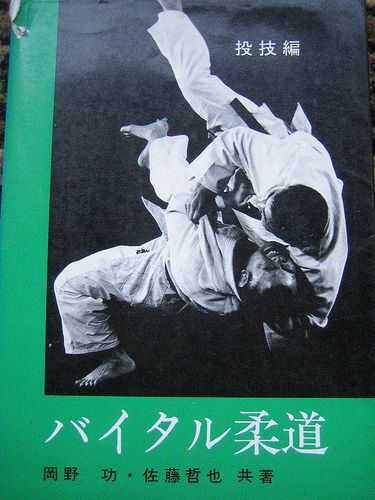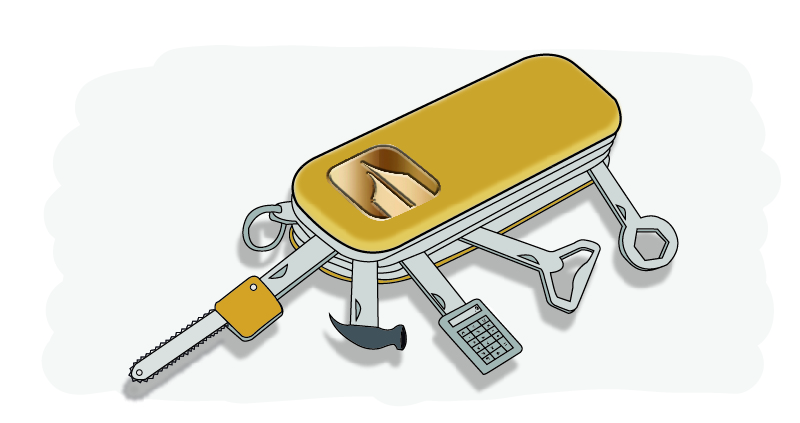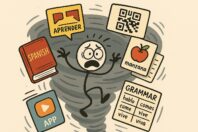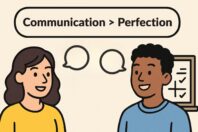How to Learn Spanish Fast in 2025

Get our free email course, Shortcut to Conversational.
Have conversations faster, understand people when they speak fast, and other tested tips to learn faster.
More infoI still remember when I decided to learn Spanish, a little over ten years ago.
I had failed miserably at every other attempt at learning a language. French. Indonesian. Three years of Chinese in high school, of which I remember nearly nothing.
I have a genetic disposition for poor memory, for God’s sake. But I was moving to Colombia for a few months, and was determined to learn, in spite of the unknown.
This probably sounds familiar. Maybe you’ve tried learning Spanish before, to little avail.
So for whatever reason – travel, speaking to family or friends, work, or love – you’ve decided that 2025 is the year to finally learn Spanish. That you are tired of waiting. That you want to finally be able to actually communicate. You want to prove to yourself and everyone around you that you can learn another language.
But you realize that there’s a lot of BS out there about how to learn a language. You don’t want to just follow the traditional methods that are so ineffective and expensive.
That’s where I come in.
When I arrived in Medellin, Colombia, I filmed a documentary about not just learning Spanish, but doing it in a single month.
And 18 months later, I filmed another documentary, this time with my Spanish teacher and now best friend as co-student, about learning Portuguese in a single week.
And beyond the million people I’ve helped through those films, I’ve been able to use my business, BaseLang, as a testing ground to hone the perfect method for learning Spanish extremely quickly.
I’ve boiled down all that I’ve learned, including the best of my book into the following quick guide to learning Spanish fast in 2025.
The next 10 minutes will be the best you ever spend on your journey learning Spanish.

Download the expanded guide to read later
This page gives you a great overview of the most important concepts and strategies, but for the full, expanded guide, click the button below:
Download Guide Now!The Foundational Law of Learning Spanish Fast
If you’ve learned any Spanish before, you probably focused on learning the “stuff” of the language – grammar, vocab, maybe pronunciation.
Which makes sense. That’s obviously the first step.
But what good is all of that info if you can’t effortlessly use it in real conversations with Spanish speakers?
Sure, you know the stuff. But if every time you go to form a new sentence, you are racking your brain for the right sentence structure, the right conjugation, that word you can never remember…
…then you have a problem.
Your Goal is to Have Natural Conversations With Real People… Right?
Then you not only need to learn the grammar and vocab, but become confident using it.
And the only way to become confident having conversations in Spanish is to have lots of conversations in Spanish.
So if you’ve done the entire Duolingo curriculum…
Listened to the Pimsleur tapes…
Taken academic classes…
Memorized hundreds of words of vocabulary…
…but still can’t actually speak Spanish, that’s NORMAL.
It’s not that you aren’t good at languages. It’s that you’ve been skipping half of the entire process – speaking!
There are TWO parts of learning any language:
- Part one is learning the “stuff” of the language (the vocab, the grammar, the pronunciation, etc).
- Part two is becoming confident using that stuff by having lots of conversations (this is where immersion gets all of its power)
No matter how much time you spend studying (part one), if you don’t have lots of conversations, you will NEVER become conversationally fluent.
So on a fundamental level, learning Spanish is a recurring process of learning something new, and then actually using it in conversations to “solidify” it.

The issue is that almost every method for learning a language focuses purely on part one:
- Apps like Memrise, Duolingo, and Rosetta Stone
- Tapes like Pimsleur and Michel Thomas
- Formal classes like the ones given in high school, college, and language schools
And immersion (part two) isn’t enough on its own. That’s why you have expats who have lived in Colombia for five years who can barely get by.
WHAT You Learn is More Important Than HOW
 Author Tim Ferriss has a great story about how he learned Japanese.
Author Tim Ferriss has a great story about how he learned Japanese.
He did an exchange program in Japan in high school, and everything was in Japanese. He was studying like crazy, but struggling to get by.
Then, he came across a book of the 1000 most common words in Japanese. He memorized them, and seemingly overnight he understood almost everything people told him.
The moral of the story is that WHAT you learn is more important than HOW you go about it.
So what should you focus on?
As a beginner, you want to learn the most common 1000 words or so, and the most important grammar. Meaning you can skip things like the future tense (use “I’m going to” instead) and the infamous subjunctive. Woohoo!
After that, you should just learn vocab specific to the topics that you care about.
Love food? Learn food vocab. Going to volunteer? Learn some medical vocab. Love to talk about business? Learn some business vocab. These are the words that are part of your most common 1000 words, since you talk about those subjects a lot.
The Power of Flashcards – And The Big Mistake to Avoid
Flashcards are one of the best ways to memorize lots of vocabulary at once, if not the best way.
More specifically, an SRS (spaced repetition system), which are basically “smart” flashcards. The idea is, when you get something right, the time before you see that card again increases. 1 day. 4 days. 2 weeks. A month. Four months. And so on.
These intervals are set to be right before we forget something, based on research into memory.
There are three main options for flashcard SRS apps: Anki, Memrise and Brainscape.
Anki is powerful and simple once it’s set up, but it’s a royal pain to learn and you have to make all of your own cards. It’s also hideous, and you have to pay for the app.
Memrise is another popular choice and works well, especially if you like their game-style approach.
That said, we use Brainscape for BaseLang. It’s clean, free, and super easy to use. We’ve already pre-loaded all of our flashcards, so you can dive straight in without wasting time setting anything up. You can get access to BaseLang’s flashcards 100% free.

The Mistake Most People Make With Flashcards
Let’s be very clear.
Flashcards have ONE job.
That job is to get a word from you not knowing it, to you being able to remember it if needed in a conversation (even if it takes a few seconds to recall).
That’s it.
Once you can remember it in a conversation, the flashcard has done its job. It’s now time for Part Two from the Foundational Law of Learning Spanish Fast: using it in a real conversation.
When you actually use the word a few times in real conversations – it sticks. And you’ll no longer need the card.
But if you never use it, you’ll forget it if you stop using flashcards. The goal is to remember the words without needing flashcards anymore. But how? Use it upfront to cram vocab, then actually USE the vocab. Then, the flashcard becomes unnecessary.
Learn Pronunciation First
Getting a grip on the sounds of Spanish is key to do upfront.
When I learned Spanish, I figured that getting near-native pronunciation would only help… well, my pronunciation.
But I was wrong.
In the process of getting perfect pronunciation, you actually tune your ear to the sounds of Spanish. So you can hear the difference between the Spanish “a” and the English “a,” for instance.
In this way, your ears are expecting the correct sounds, which is mandatory if you want to be able to understand people (especially when they talk fast).
You can use our Sounds of Spanish course for free.
Speaking of understanding people when they talk fast…
How to Understand People When They Speak Spanish Fast
This is literally the #1 thing people email me about, and probably the #1 frustration of any language learner of any language.
The standard prescription for this is more listening practice.
But that’s not really the issue.
There are two main culprits if you struggle to understand someone when they speak fast:
- You don’t have a strong handle on the sounds of Spanish. (See above and do our free Sounds of Spanish program.)
- You have to translate.
Number 2 is the big one.
The reality is, even if you know everything someone said, if you have to translate, you’ll never keep up. To understand people speaking fast, you have to understand Spanish – not the English you can translate that Spanish into.
Let’s be clear, there’s nothing wrong with translating. I’m not recommending a learning method like Rosetta Stone where you look at a picture and try to guess what the hell it’s supposed to represent.
You will ALWAYS be translating something. Fact.
I’m now fluent. I’ve spoken in public in Spanish. I work in Spanish. I’ve had a surgery where the doctor didn’t speak English.
And I still translate things.
BUT not the same things I was translating six months ago. Or a year ago.
There are always things that are new to you, on the edge of your ability. These are the things you just did Step One of the Foundational Law for, and thus have not yet solidified with conversations.

The orange area above is the part you have to translate. Over time, as you learn new things and then solidify those things with conversation, the blue part grows and grows.
The blue part is where you don’t have to think to use it. It just comes out. And if you can SAY something without having to think, you can UNDERSTAND something without having to think.
So if someone is speaking a million miles an hour, but with only stuff in your blue zone (and a small amount from the orange zone), you’ll be able to understand.
At the beginning, that’s just “hola,” “gracias,” and “cómo estás?” You don’t have to translate those – you understand them at face value.
As you progress, more and more advanced things will be like that.
“Vamos a salir esta noche?” (let’s go out tonight?), then “iba a ir al parque pero tenía que quedarme en casa” (I was going to go to the park but I had to stay home), then fancy complicated stuff like “si estuvieras conmigo iríamos a cenar” (if you were with me, we’d go have dinner) or “si hubiera sabido lo que iban a hacer, no hubiera ido” (if I’d known what they were going to do, I wouldn’t have gone).
Again, you see the Foundational Law in effect. Learn something, then use it in conversations to put it in the blue zone.

Download the expanded guide to read later
This page gives you a great overview of the most important concepts and strategies, but for the full, expanded guide, click the button below:
Download Guide Now!The MOST Common Mistake Spanish Learners Make
There’s one mistake that is more common than all the others.
And it’s this: worrying about being perfect.
You will make mistakes. Period.
You will tell people you are horny (“estoy caliente”) when you think you are telling them that you are hot (“tengo calor,” which is literally “I have heat”). You’ll stumble over your words, forget things, and speak Tarzan Spanish.
That’s more than just normal. It’s required. Because the only way you get to speaking perfect Spanish is by speaking a LOT of imperfect Spanish. It’s impossible to get in the speaking practice required if you refuse to allow yourself to make inevitable mistakes.
And no, you won’t build “muscle memory” with incorrect grammar, unless you do it for YEARS.
The language learners who make the fastest progress are the ones who aren’t afraid to butcher a sentence, and who are more concerned with first being understood – COMMUNICATING – and then perfection later on.

The Easiest Way to Apply All of This To Learn Spanish Fast in 2025
So it’s really quite simple. To learn Spanish, you need to:
- focus on the right grammar and most-used vocab
- have a TON of conversations
- nail the sounds of the language early on
- use flashcards to memorize the vocab upfront
- …and not be afraid of making mistakes
But what’s the right grammar? Who will you have those conversations with? Who will check your pronunciation? Who will give you a controlled environment to make embarrassing mistakes without fear?
Let’s be straight here, you need a teacher (and not just any teacher, but one who follows the above principles).
But you already knew that. Of course one-on-one classes with a great teacher is the fastest way to learn Spanish. But it’s expensive.
Or, it was, before we created BaseLang to fix the issue.
At BaseLang, you get unlimited one-on-one Spanish tutoring with professional teachers, over video chat, for just $179 a month.
We focus on getting you from zero to conversationally fluent, so you can:
- travel or live in Spain or Latin America without living in Google Translate
- join the Spanish conversations your Latino coworkers, friends, or family members are having
- date Spanish speakers
- stop getting passed over for jobs or promotions for less-qualified people who are bilingual
It’s really unlimited, no caveats. Hours are 6am to midnight Eastern US time. There are hundreds of teachers to choose from (you get to schedule yourself over our platform). The curriculum is optimized for becoming conversational fast – in fact, it’s a honed version of what I used for my Spanish in a Month documentary.
Your first week is just $1. And we have a negative-risk guarantee: if at any point in the first 35 days, you don’t absolutely LOVE BaseLang, we’ll give you a full refund plus $20 extra for wasting your time.
If you’re serious about learning Spanish in 2025, it’s a no-brainer.
In fact, you only need to take 2 hours of class a week to make BaseLang more affordable than paying for an online tutor (who doesn’t come with the other benefits of BaseLang). Many of our students take that every day.
Click here to start your first week trial.
And if you don’t want to take my word for it, check our page that lists every 3rd-party review of BaseLang we know of. Or our page where we post every single piece of post-class feedback (requested after each class), unedited, for everyone to see – there are tens of thousands of them, and you can see what students like you really think. We’re transparent.
If you’re serious about finally learning Spanish this year, click here to start your first week trial.
______________________________
This post is an excerpt from our Ultimate Guide to Spanish, and you can read more excerpts from the guide by clicking below:
- Best Way to Learn Spanish: 10 Principles To Follow
- How To Learn Spanish Grammar: A Simple Strategy
- How To Get Perfect Spanish Pronunciation
- How To Speak Spanish Like A Native: Listen And Mimic
- Spanish Listening: How to Understand People When They Talk Fast
Or you can download the entire 119-page guide, for free, right below.

Download the expanded guide to read later
This page gives you a great overview of the most important concepts and strategies, but for the full, expanded guide, click the button below:
Download Guide Now!


